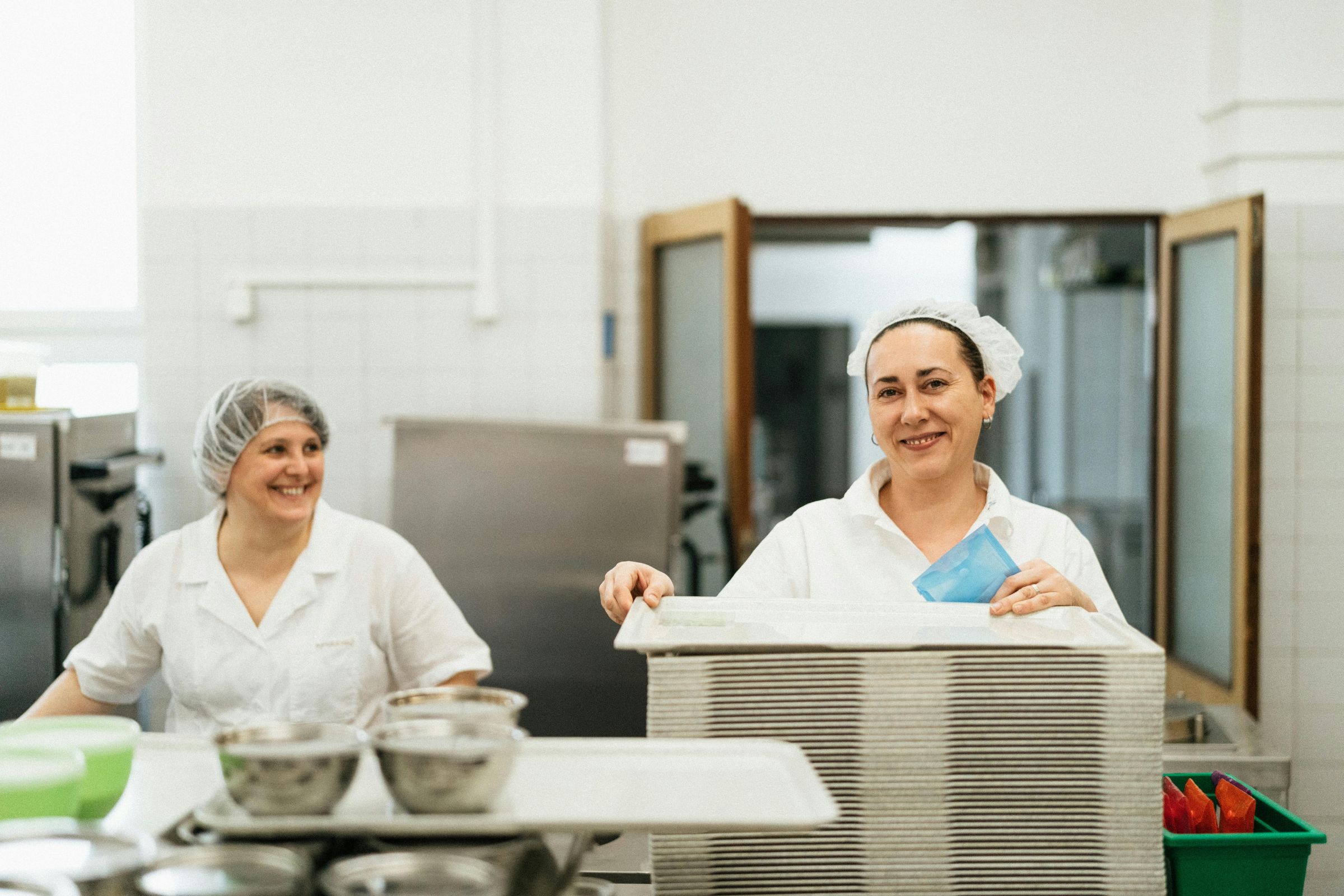Table of Contents
Related Articles
Food Service Safety: Preventing Kitchen Injuries In Educational Settings

Your institutional kitchen is likely one of the highest-risk environments on your campus. For ISCC member schools and cultural institutions, kitchen injuries directly impact workers compensation costs, staffing continuity, and your ability to maintain consistent meal service.
The Numbers Tell The Story
In commercial kitchens, 31% of injuries are severe enough to require time off work. In higher-education dining facilities, the breakdown is clear: cuts and lacerations (22%), slips and falls (20%), burns and scalds (13%), and sprains and strains (15%).
Perhaps most telling: 92% of wet-kitchen employees report slippery floors during the week, while 40% of dry-kitchen employees face this hazard at least weekly.
Four Critical Prevention Strategies
1. Stop The Cuts
Cuts, lacerations, and punctures account for 22% of injuries in higher-education dining facilities, making them the single most common kitchen injury type. Sharp knives, slicers, food processors, and mandolins create constant laceration risks in busy institutional kitchens preparing meals for hundreds or thousands of students and staff daily.
Quick Wins:
- Install and enforce protective guards on all slicers
- Keep knives properly sharpened (dull blades slip and require more pressure)
- Provide cut-resistant gloves for high-risk tasks
- Never store knives loose in drawers
2. Prevent Burns
Burns and scalds account for 13% of higher-education dining facility injuries but often result in longer recovery times and higher medical costs than other kitchen injuries. Educational kitchens with high-volume production create multiple burn hazards—industrial ovens, steam kettles, fryers, and hot holding equipment all operate at temperatures capable of causing serious injury.
Quick Wins:
- Turn all pot handles away from edges and walkways
- Never leave fryers unattended during operation
- Install splash guards near fryers and steamers
- Consider closed-loop oil systems to eliminate manual hot oil handling
3. Address The Floor Hazard
Slips, trips, and falls represent 20% of all injuries in higher-education dining facilities. School food-service employees report floors are slippery at least once a week in 40% of dry kitchens and during the week in 92% of wet kitchens. These statistics reveal that slip hazards aren’t occasional problems—they’re daily realities in educational food service requiring constant vigilance.
Wet floors from spills, grease accumulation, frequent cleaning, and the inherent nature of food preparation create persistent slip hazards in institutional kitchens.
Quick Wins:
- Require slip-resistant footwear—no exceptions
- Implement immediate spill cleanup with visible signage
- Install commercial-grade slip-resistant flooring
- Keep walkways clear and well-lit
4. Reduce Strain Injuries
Sprains, strains and soft-tissue injuries account for 15% of higher-education dining facility injuries. Educational kitchens require repetitive movements, heavy lifting, and prolonged standing—all risk factors for musculoskeletal injuries that can lead to chronic conditions and extended time away from work.
Quick Wins:
- Enforce two-person lifts for items over 25 pounds
- Store frequently used items at waist height
- Provide rolling carts and hand trucks
- Schedule regular breaks during long shifts
The Student Worker Challenge
Educational institutions face a unique challenge that commercial restaurants don’t: student workers with limited experience and high turnover rates. The National Institute for Occupational Safety and Health estimates that emergency rooms treated approximately 44,800 injuries suffered by teenage restaurant workers, and teens working in restaurant kitchens are six times more likely to be burned than teens working in any other industry.
Independent schools, colleges, and universities employing students in dining facilities must address this elevated risk through enhanced supervision, training, and appropriate task assignments.
The ROI On Safety
OSHA estimates that every dollar spent on safety programs saves four to six dollars in injury-related costs. For ISCC members, this means lower workers compensation claims, better experience modification rates, reduced staff turnover, and favorable impact on dividend distributions.
Your Action Plan
This Week:
- Walk through your kitchen and identify the top three hazards
- Verify slip-resistant footwear compliance
- Confirm fire suppression inspection is current
This Month:
- Schedule comprehensive safety training for all staff
- Review your last three kitchen injuries for patterns
- Update equipment maintenance schedules
This Quarter:
- Budget for engineering controls (guards, better flooring, automated systems)
- Establish a kitchen safety committee with staff input
- Create safety performance metrics and post them visibly
The Bottom Line
Kitchen and food service injuries are preventable, not inevitable. By implementing comprehensive safety programs, investing in proper equipment and training, and fostering a culture where safety is everyone’s responsibility, you can significantly reduce your workers compensation exposure while protecting your most valuable asset—your staff.
Educational institutions that have introduced safer equipment in their kitchens have greatly reduced employee turnover and injury rates, demonstrating that safety investments create returns beyond just claims reduction.
At ISCC, we understand that superior risk control services help members keep their employees safe while favorably impacting operational costs. Your food service operation doesn’t have to be a high-risk environment. With the right prevention strategies, proper training, consistent enforcement, and genuine commitment to safety, you can create a dining program that serves your community safely and sustainably for years to come.




